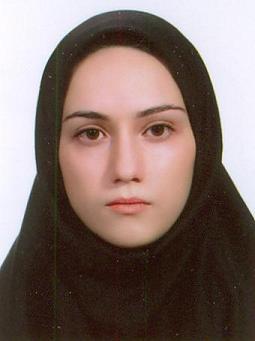- English
- فارسی
2017-Shokri.M.
 |
 |
Mahshid Shokri
Email: mahshid.shokri@ma.iut.ac.ir, shokri.mahshid@gmail.com
- PhD, (2017- ): Fabrication and characterization of bioadhesive coacervate hydrogel based on chitosan and gallium and zinc doped hydroxyapatite mesoporous nanoparticles to control the bleeding and infection after median sternotomy following open heart surgery
Abstract:
The Median sternotomy, in which a vertical incision occurs along the sternum, provides access to the heart or lungs, and is one of the most efficient methods of accessing cardiac and chest surgery. Sternotomy wound repair may be associated with sternum wound infection, osteomyelitis or mediastinitis, which is more complicated especially in patients with chronic obstructive pulmonary disease, chronic renal insufficiency, diabetes mellitus, obesity and smoking. Bone wax can be covered the bleeding bone surfaces and created a mechanical barrier against the blood stream. Despite the significant hemostatic ability of bone wax, this substance cannot be absorbed by the body and therefore prevents bone fusion and promotes infections and inflammatory reactions. Therefore, improved methods are needed to control bleeding without using bone wax. Substitute materials used as blood coagulants are based on natural polymers (e.g. collagen, gelatin, cellulose, chitin, chitosan, and fibrin) and synthetic (e.g. Polycyanoacrylates, polyacrylic acids, and Polyalkylene oxides oxides). Chitosan is one of the most well-known hemostatic material, due to its prominent properties such as rapid absorption, availability, antimicrobial, anti-allergic, high biocompatibility and acceptable biodegradability along with low toxicity. Considering the problems with closing the sternum using mechanical devices, there is a need for bone adhesive with high adhesion strength and favorable biodegradation behavior. Most common adhesives cannot be used on bone tissue due to the loss of their surface activity in a moist environment. Inspired by aquatic organisms, such as mussels and sandcastle worms, biomimetic adhesive has been introduced. Sandcastle worms secrete a robust underwater adhesive based on the complex coacervate to build a nest, which can bind sand grains in the underwater environment. Bioadhesive hydrogels by using the complex coacervate can provide an ideal adhesive with hemostatic properties and bone repair. It has also been reported that the presence of nanoparticles in the hydrogel systems is consistent with the ability to assemble polymer chains, and thus increase its adhesion properties. Nanocomposite hydrogels are more advantageous than conventional hydrogels, with improved properties such as increased mechanical strength, osteogenicity and antimicrobial properties, which can be used in areas such as bone tissue engineering. Additionally, nanocomposite gels can stick and stay in place and provide antibiotics locally and sustainably. Controlled and sustained release drug delivery to prevent deep sternal infection is desirable. Nanoparticles are used as targeted and controlled release systems for drug and therapeutic agents. Mesoporous hydroxyapatite nanoparticles have a high surface area, regular and tunable pore sizes, and large pore volumes, bone graft ability and excellent biocompatibility.The inclusion of Mesoporous hydroxyapatite nanoparticles in the hydrogels facilitates osteoconduction by mimicking the structure and composition of sponge bones. These nanoparticles can be doped with metal elements such as gallium, silver, cerium and zinc to increase antibacterial properties and bone formation. In fact, mesoporous hydroxyapatite nanoparticles have a potential for multi-functional systems by creating a bioactive reaction (binding and bone remodeling) along with other beneficial effects through controlled release of therapeutic agents (including host antimicrobial agents in mesopores. Hence, these biomaterials can overcome dual challenges of tissue regeneration and fight infection at the site of injury with minimal systematic side effects. According to what was said, in this study fabrication and characterization of bioadhesive coacervate hydrogel based on chitosan and gallium and zinc doped hydroxyapatite mesoporous nanoparticles will be done to prevent complications after median sternotomy following open heart surgery.
Outcome:

